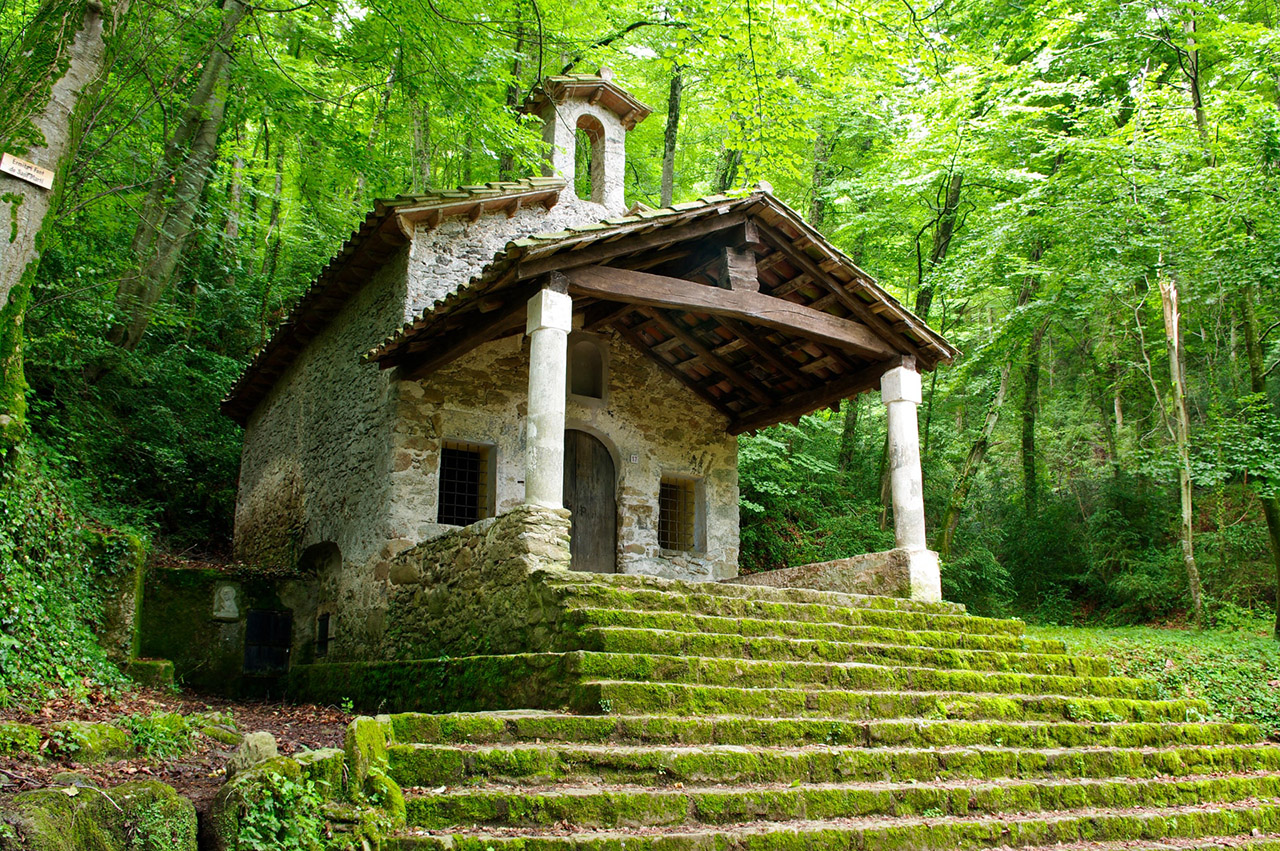Geography: Along this route we will go over several zones in La Garrotxa: Alta Garrotxa, Les Preses and Maià de Montcal.
The Alta Garrotxa is one of the most important territories in the eastern Pyrenees. Half way between the comarques of La Garrotxa, El Ripollès and L’Empordà, the Alta Garrotxa comprises the villages of Beuda, Montagut i Oix, Sales de Llierca, Tortellà, Sant Joan les Fonts and La Vall de Bianya, which we will later visit. We will also stop at Les Preses, a village located 4 km away from Olot, the capital of La Garrotxa, which is part of the La Garrotxa Volcanic Zone Natural Park. Although it is an independent village, it is located in La Vall d’en Bas and its landscape is composed by crest lines, cliffs and hills.
History: La Garrotxa is a comarca that has been inhabited since thousands of years ago, as shown by the evidence of many human settlements which go from the Palaeolithic to Roman and Benedictine times, like in Sant Aniol d’Aguja. During the Medieval Ages, in this comarca, some simple churches and hermitages were built in a style known today as Romanesque.
Common vocabulary of Romanesque architecture
- Altar: a table made of wood or stone used to celebrate the mass.
- Apse: an area with curved walls at the end of a building, usually at the east end of a church where the chancel is found.
- Baptismal font: it is an article of church used for the baptism.
- Belfry: a structure enclosing bells, usually as part of a bell tower or steeple.
- Bell tower: a tower that contains one or more bells or that is designed to hold bells, even if it does not have any.
- Capital: an architectural element crowning the upper part of a column. It can be sculpted with floral, animal or human motifs.
- Conjuratory: a small building in the shape of a porch located near the church. The priest used to stand there when chasing away storms and hailstorms.
- Corbel: an architectural element jutting from the apse, which is used to support something.
- Chancel: the part of a church containing the altar, where the priests and choir sit.
- Holy water font: it is an article of church located on the entrance used to cross oneself when entering the temple.
- Nave: it is the body of a church, comprised between the walls, arches, pillars or columns.
- Oil font: a stone font, normally square or rectangular, where the holy oils are kept.
- Reliquary box: a small container for relics.
- Round arch: an arch formed in a continuous curve.
- Transverse arch: an arch whose span is at right angles to the length of a vaulted space.
- Tympanum: semi-circular or triangular decorative wall surface over a Romanesque or Gothic entrance, bounded by a lintel and arch.
